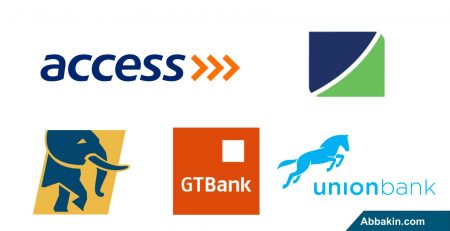Methods Entrepreneur Can Use To Evaluate A Business Idea
This article outlines the key methods entrepreneur can use to evaluate a business idea before starting up, solving real problems and adding value to the world.
If you want to start a business or planning to launch a new product line, you’ll need to think carefully about your business idea and find out if it’s a great idea that could turn into a useful product or service.
The first thing to do when you get a business idea is to determine whether it’s a good one. Not every business idea that seems good at first is practically marketable.
However, there are many methods available on how to evaluate your business ideas, and which marketing research falls into one of these methods.
Below are few important methods entrepreneur can use to evaluate a business idea and help validate the proposed product development prior to launch.
Following these idea assessment strategies will save you thousands of dollars in misguided resource utilization.
5 Key Methods Entrepreneur Can Use To Evaluate A Business Idea
#1. Define your Mission Statement
It’s a classic mistake of new entrepreneurs to think that their ‘great product’ should appeal to everyone. Even worse, it’s easy to assume that great products sell themselves.
Nevertheless, a successful business should base itself on a clearly defined mission
statement.
What is a Mission Statement?
A mission statement is generally brief, no more than one or two sentences, that clearly states the purpose of the business.
If you have a strong business idea, then your mission statement should reflect the following:
- Who your company is.
- What you stand for and why you do what you do.
- Who your targeted customers are and what you have to offer them.
- The problems or needs that your company serves.
- The kind of work environment that will support your employees.
Before you launch your new business or product, be sure to ask yourself if this product fits within the vision you have for your life and business aspirations.
Does your business idea solve a real problem or makes people’s lives better?
Does it fit within my core company objectives?
Does it get you closer to your short, medium and long term objectives?
Is this how you want to spend your time and money?
When you’re adding value to the world and solving real problems, it’s generally much easier to come up with a worthwhile strategy to make money.
You can create a feedback loop you need in order to know if you’re going in the wrong direction.
If you already have an established business or if you are simply on the verge of creating one, set aside some time to run your idea through a strong value propositioning and mission statement.
Read: How to Create a Vision Statement and Brand Value Positioning
#2. Conduct a Market Research
Normally, you can evaluate your business idea by sourcing for market and industry information using questionnaires, surveys, focus groups, and sample or field testing.
Market research, which includes social and opinion research, is the systematic gathering and interpretation of information about individuals or organizations using statistical and analytical methods and techniques of the applied social sciences to gain insight or support decision making.
Research is an integral part of the business planning process that provides relevant data to help solve marketing challenges that a business will most likely face.
As a developer, you’ll need to do some research to evaluate your business idea. And here are a few insights that can help your decision making.
Market research which is divided into two categories: primary and secondary research will examine your target market and its size, your customer needs, their buying behaviors; industry trends and your competitions.
While carrying out your idea validation process via market research, you need to consider who will make use of your intend services or products.
It is not enough just to have an idea for a business. You need to know that your business will have customers, and you need to be able to identify them.
Do you know the potential customers and exactly how to reach them?
How much are people willing to pay for your product or service?
You need to examine whether the market for your product or service is increasing, stagnant or decreasing.
Look at sales reports of other similar companies over the past six to twelve months and use their results to gain some indication of what you may expect.
We have covered more tips on: How to Conduct a Market Research and brainstorm business ideas.
After conducting a market survey, review the results and reconsider the strength of your business idea. If your research results do not show that a market exists to support your business, you may need to revise your idea.
Will your business be systemized, grown through good and large enough target markets that the whole exercise worth the effort? For the best results, your business idea should be something new, creative,
original and marketable.
#3. Use Financial Method
Every business enterprise starts with an idea, a good idea.
Unfortunately, your idea may not be as good as you think. Evaluating your idea in advance can help separate the good from the bad.
The financial method is a systematic forecasting method used by financial experts to determine the validity of an idea or project.
There is several approach to this problem, however, the cost benefit analysis technique have often be used by inventors considering multiple business ideas.
Since the aim of evaluating a business idea is to determine the rate of return on a given project or investment, financial experts use several financial methods such as
- Cost Benefit Analysis
- Pay Back Period
- Accounting Rate of Return (ARR)
- Cost Benefit Ratio
- Net Present Value, and
- Internal Rate of Return (IRR)
Cost Benefit Analysis
This is an analysis of the sum of all costs to determine if the idea should be taken forward.
In the analysis of two or more ideas, we review costs for prototype development, patent protection, product liability, manufacturing, distribution and market entry.
This strategy can help decipher the best idea to first bring to market by strictly focusing on the financial burden involved with the product.
Pay Back Period (PBP)
This is another method that concerned with the point in time at which the cash flows from the investment recoup the amount spent on it.
The pay-back-period system does not differentiate between cash flows, and ignores cash flows after the payback period.
We will cover more on these project evaluation methods in our future lessons.
#4. Use Idea Checklist/SWOT Analysis Method
This is a method used to evaluate an idea through a checklist of specific questions related to a business and market.
Before settling and taking your first steps, consider our list of 10 important questions every new entrepreneur must answer before starting a business.
It uses the SWOT Analysis.
What is SWOT Analysis
SWOT analysis (alternatively SWOT matrix) is an acronym for strengths, weaknesses, opportunities,
and threats and is a structured planning method that evaluates those four elements of an organization, project or business venture.
SWOT Analysis is a useful technique for understanding your Strengths and Weaknesses, and for identifying both the Opportunities open to you and the Threats you face as a business or individual.
Conducting a SWOT analysis of your business is a lot more fun than it sounds, and at the end you’ll have a solid strategic plan for your business’s growth.
This process provides the important evaluation techniques to help you on a specific business you have in mind.
These principal questions and answer session will enable you know your key success areas and those parts you need to work on before achieving a continued business goals.
We have added a tool you can use to create a SWOT analysis for free. You can check out this SWOT analysis template here. No registration or login needed.
#5. Use a For” and “Against” List
If you have decided on a business but not too sure about the idea; use a “For” and “Against” List to evaluate your business.
Make a “For” and “Against” list regarding characteristics of the businesses you have in mind.
On a blank piece of paper, draw a vertical line down the middle of the page and list on one side all the “Fors” and on the other all the “Againsts.”
Sometimes this will help clarify your thinking. Visit our resource center to download and use the business evaluation template.
Write down the names of at least five successful businesses in your chosen field. Analyze what these five businesses have in common and make a list of reasons for their success.
Wrapping up: Methods Entrepreneur Can Use To Evaluate A Business Idea
If you’re going to evaluate your innovative business ideas, there are several things to look out for. However, we hope some for these steps can help validate your business concept.
But, remember, “Two heads are better than one”. Talk to several people in your intended business including a business mentor.
Don’t be afraid to hear about the negative aspects of your intended business. Instead, seek out the pitfalls — better now than after you open your doors.
Take notes if possible. Analyze what your competitors are not doing well and write down the reasons.
Download and complete the business evaluation “For” and “Against” checklist we have provided for you to use.
It’s this article helpful? Comments and Share it with friends. To keep the conversation going, follow us on Twitter, Facebook @abbakinglova. Or join our Forum.
Subscribe to our Newsletters now if you want to receive latest
updates about innovation, business trends and statistics. You’ll get a free
eBook!












Leave a Reply